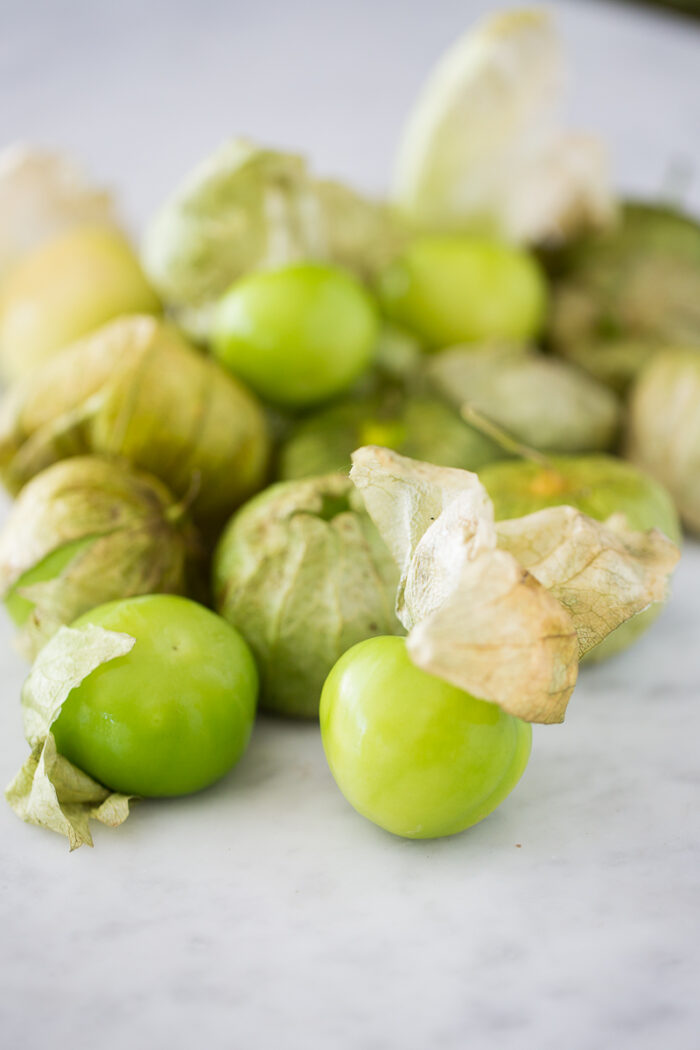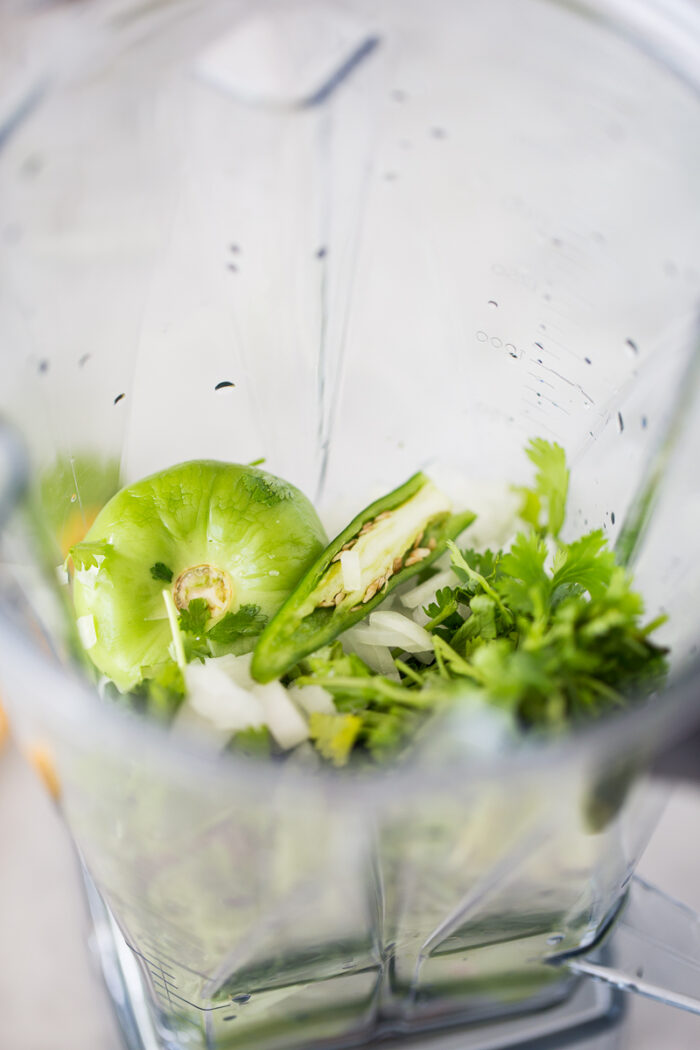Tomatillos, also known as “husk tomatoes,” are a staple ingredient in Mexican cuisine. They are small, green fruits related to tomatoes and have a slightly tart and tangy flavor. Tomatillos have a special place in my heart and my fridge (you will always find some).

What are tomatillos?
Tomatillos are a type of small, green fruit related to tomatoes. They are native to Mexico and Central America and are a staple ingredient in Mexican cuisine. You can eat them raw, roasted, or cooked.
Tomatillos can be eaten raw or cooked and are a good source of vitamins C and K and dietary fiber. They can be used as a substitute for tomatoes in many recipes.
How do they taste?
Tomatillos are slightly tart and tangy and are used in salsas, sauces, and stews. They are typically picked when still green and have a papery husk surrounding the fruit.

How to cook tomatillos
Remove the husk and give them a quick rinse before using them.
Depending on the recipe and desired outcome, Tomatillos can be cooked in various ways. Here are a few standard methods for cooking tomatillos:
Roasting: Remove the papery husk from the tomatillos and cut them in half if they are too big. Place them cut-side down on a baking sheet lined with foil and roast in a preheated oven at 425 degrees Fahrenheit for 15-20 minutes or until slightly browned and soft.
You can roast them on a skillet or cast iron pan on the stove over medium-high heat.
Boiling: Remove the husks and wash the tomatillos. Please place them in a pot and cover them with water. Bring to a boil and simmer for 10-15 minutes or until they are soft.
Sautéing: Remove the husks and wash the tomatillos. Cut them into small pieces and sauté in a pan with a bit of oil over medium heat for 5-7 minutes or until soft.
Grilling: Grill them for a few minutes or until they are slightly charred and soft.
When are tomatillos ripe?
Tomatillos are typically picked when still green and have a papery husk surrounding the fruit. They will be ripe, ready to eat when filling out the husk, and slightly soft.
The color of the tomatillo will also change from light green to deeper green as they ripen. It’s important to note that the husk should be dry and brown when ready to pick. The tomatillo inside is not fully ripe if the husk is still green or damp.
Remember that tomatillo will not ripen once picked, so it’s essential to wait until they are fully ripe before harvesting them.
Best way to store them
Tomatillos can be stored in the refrigerator for up to a week if you don’t plan to use them immediately. They can also be frozen in freezer-safe containers or bags.
What are tomatillos de milpa?
Tomatillos de milpa, also known as “field tomatillos,” is a variety of tomatillo grown in traditional, subsistence farming systems in Mexico and Central America, often called milpa farming.
Milpa farming is a traditional farming system that combines the cultivation of corn, beans, and squash. Tomatillos de milpa are usually smaller and more flavorful than commercial varieties and are considered to have a superior taste.
They are mostly sold in local markets and are not commonly found in supermarkets. They are used in traditional dishes such as salsas and tamales. They are also used for medicinal purposes, as well as for their nutritional value.
Why are some tomatillos purple?
Some varieties of tomatillos can have purple or black coloring on the skin. This is due to anthocyanins, pigments that can provide red, purple, or black color to fruits and vegetables. Anthocyanins are antioxidants that can offer health benefits, such as reducing inflammation and protecting against certain types of cancer.
Purple tomatillos are not commonly found in supermarkets but are more common in local markets, especially in Mexico and Central America, where they are grown in small-scale, traditional farming systems. They have a similar taste profile to green tomatillos and can be used similarly.
It’s worth noting that the purple color only occurs in the skin and not in the flesh, so once you open the tomatillo, you will find the flesh green.
